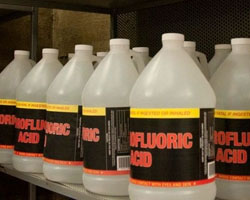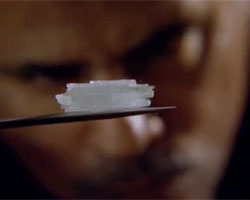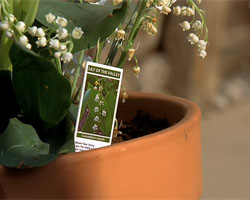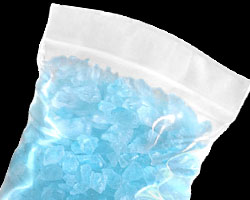Chemistry, technically, is the study of matter. But Walter White prefers to think of it as the study of change.
“It is growth, then decay, then transformation. It is fascinating, really,” says the character.
To that extent, the Breaking Bad antihero — portrayed by Bryan Cranston in AMC’s hit series — is the fictional embodiment of his own words. Over five seasons, viewers have witnessed the exothermic transformation of the timid, middle-class high school chemistry teacher into Heisenberg, the manipulative alpha male meth mogul. Along the way, he’s used his scientific acumen to build his empire and dispose of his adversaries.
But with his life collapsing around him and the series barreling ahead to a climatic finale, it begs the question: Is Heisenberg’s science up to snuff? We put that question to some of Dal’s scientific experts.
[Warning: contains spoilers for seasons 1-4 of Breaking Bad.]
Dissolving the evidence
In season one, White and his partner-in-crime, Jesse Pinkman, need to dispose of a dead drug dealer. To avoid drawing unnecessary attention, the duo decides to use hydrofluoric acid (HF) to dissolve the body. Their plan goes awry when Pinkman liquifies the corpse in his porcelain bathtub rather than a plastic container. The acid eats through the tub and the ceiling, with the gory remains splattering on the hallway floor below.
Professor John Gosse, who uses HF to dissolve rocks and minerals to isolate their isotopes, said the scene isn’t as scientifically realistic as it seems.
 “[The hydrofluoric acid] would probably go through the drain first because it’s going to dissolve whatever’s easiest to dissolve,” says Dr. Gosse. “Your chrome plated hardware around the drain and the plug itself would probably get eaten first, so it wouldn’t have to go through a porcelain tub.”
“[The hydrofluoric acid] would probably go through the drain first because it’s going to dissolve whatever’s easiest to dissolve,” says Dr. Gosse. “Your chrome plated hardware around the drain and the plug itself would probably get eaten first, so it wouldn’t have to go through a porcelain tub.”
Dr. Gosse says there are other challenges the characters would face in this scenario, such as procuring enough acid to dissolve a body. (In future episodes where this approach is needed, the characters use plastic barrells instead of bathtubs.) A gram of pure quartz takes three to four hours with very concentrated HF, says Dr. Gosse.
“Porcelain would be easier to dissolve than quartz, so less than a few hours to get through a gram of the equivalent thickness of porcelain,” he says.
“It’s plausible, I’d say.”
Mercury explosions
In season one, after getting his meth stolen and Pinkman being beaten inches from death, White decides to strike back against notorious drug tycoon Tuco Salamanca. He brings a batch of fulminated mercury – a compound which looks almost identical to meth – to a meeting with the volatile drug dealer. But there’s one crucial difference: it’s highly explosive.
 When White throws a small crystal of the fulminated mercury to the ground, the explosion levels Salamanca’s hideout.
When White throws a small crystal of the fulminated mercury to the ground, the explosion levels Salamanca’s hideout.
“It’s reactive as hell,” says chemistry professor Mark Stradiotto. “Kind of like T.N.T. It releases nitrogen gas and carbon dioxide very quickly.”
Dr. Stradiotto says the ingredients would be relatively easy to come by for the characters and the explosion plays out like it would in real life.
“It’s a shockingly energetic reaction,” he says. “It’s absolutely realistic.”
Poisonous flora
In season four, White poisoned young Brock, son of Pinkman’s girlfriend Andrea, in an attempt to manipulate Pinkman into sharing his view that kingpin Gus Fring had to be eliminated. For many of the show’s fans, even though White intended to sicken Brock but not kill him, this was the character's point-of-no-return. He had become the show’s villain.
While the plant he used, Lily of the Valley, may look harmless, it’s extremely poisonous according to Claude Caldwell of the Department of Plant and Animal Sciences.
 “Poison is in the dose,” says Dr. Caldwell, who is also associate dean in the Faculty of Agriculture.
“Poison is in the dose,” says Dr. Caldwell, who is also associate dean in the Faculty of Agriculture.
“If you’re an animal and you have a predator coming, you either run away or hide,” he says. “If you’re a plant you don’t have those options. You only have a couple things to protect yourself, and one is poison.”
Lily of the Valley contains cardiac glycosides, which can be used to treat heart failure, but over-ingestion can cause stomach pain, vomiting and even heart attacks.
The deadly and ubiquitous plant can be found growing in the wild from New Mexico to Nova Scotia. For White to have it growing in his backyard is credible, says Dr. Caldwell.
“So I hope people aren’t finding it, grinding it up and putting it in juice boxes in Nova Scotia,” he laughs.*
*Editor's note: While the scene in which White poisons Brock is never shown, the show's writers have suggested that White did so at school with a juice box.
Crystal blue persuasion
But what of the chemistry at the show’s very core: White’s incredibly pure (and popular) blue meth? Heisenberg’s trademark meth appears in the season one finale, when White and Pinkman switch their precursor from pseudoephedrine to methylamine. Their meth turns a light blue colour, which they attribute to its 99.1 per cent purity.
 But Dr. Stradiotto says the idea of blue meth is creative liberty on behalf of the show’s creators.
But Dr. Stradiotto says the idea of blue meth is creative liberty on behalf of the show’s creators.
“Methylamine is definitely not blue; it’s a colourless gas. And crystal meth itself is not blue,” he says.
“It’s a plot device; all the materials are colourless,” he says. “It’s your creative license.”
In many ways, though, Breaking Bad’s science checks out. The show’s scientific accuracy transcends White’s downward spiral and complex personal transformation. Through the struggles and the tragedies, science is White’s saving grace — sometimes his downfall — and a huge part of the show’s appeal.
As Pinkman exclaims during an episode of the show’s first season: “Yeah! Science!”

